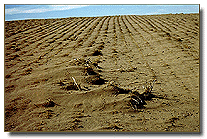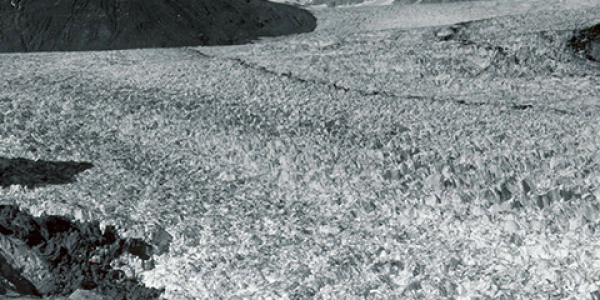Understanding drought variability is crucial to farmers and the people, businesses, and industries that rely on agriculture for food and resources. Unfortunately, instrumental records can only provide a limited picture of the size and severity of historical droughts or the factors that affect drought variability throughout the world. Tree-ring data can be used to extend past drought records to create a more complete picture of drought variability than the 20th century instrumental record can provide. These extended records can contextualize instrumental period droughts within a longer time frame.

Accessing Data at the World Data Service for Paleoclimatology
Drought data are available as summer (June–August) averages of the Palmer Drought Severity Index (PDSI) or Palmer Modified Drought Index (PMDI). Negative Palmer Index values indicate dry conditions, while positive values indicate wet conditions. Palmer Drought Index values generally fall between -6 and +6.
Living Blended Drought Atlas (LBDA) - Version 2
The half degree gridded Jun-Aug PMDI reconstructions from Cook et al. (2010) were recalibrated using the Global Historical Climatology Network (GHCN) 5km grid PMDI data. 5km data were upscaled first to match the original half-degree grid. The recalibration was performed using a kernel density distribution mapping (KDDM) technique outlined in McGinnis et al. (2015) using an R-package provided by Seth McGinnis.
The recalibration uses data from the 50-year period covering 1929–1978 common era (CE). Each grid point's mean PMDI value for the recalibration period was set to zero to avoid importing wet or dry bias. The recalibrated dataset covers the continental United States just as the GHCN instrumental data does. Since instrumental data was used for 1979–2005 CE in the Cook dataset, recalibration applied only to 0–1978 CE. The 1979–2017 instrumental years are filled in using the post-recalibration period values from the GHCN PMDI data.
Data
- LBDA V2 Overview
- Year per row text file
- Data point per row text file
- NetCDF
- Annual PMDI map directory
North American Drought Atlas (NADA) (Version 2a)
Cook et al. 2008 reconstruction of North American summer PDSI using a 2.5° x 2.5° grid. Updated PDSI values from Cook et al. 2004. Temporal coverage is 0–2006 CE. The full dataset is also available for download as a netCDF collection.
North American Drought Atlas (NADA)
Cook et al. 2004 reconstruction of summer PDSI for most of North America using a 2.5° x 2.5° grid. Temporal coverage is 0–2003 CE. The full dataset is also available for download as a netCDF collection.
Other Datasets
- Living Blended Drought Atlas (LBDA) PDSI Dataset
- Mexican Drought Atlas (MXDA) PDSI Dataset
- Monsoon Asia Drought Atlas (MADA) PDSI Dataset
- Old World Drought Atlas (OWDA) PDSI Dataset
- Eastern Australia and New Zealand Drought Atlas (ANZDA) PDSI Dataset
- Coterminous United States PDSI Dataset from Cook et al. 1999
- Coterminous United States PDSI Dataset from Zhang et al. 2004
NCEI Climate Monitoring
Explore NCEI efforts to monitor and assess the state of the Earth's climate, including current levels of drought coverage.
North American Drought Atlas (NADA) 2004 Version
Lamont-Doherty Earth Observatory Tree Ring Lab archive of NADA drought reconstructions. Includes additional PDSI maps and animations.
National Integrated Drought Information System (NIDIS)
Data portal that monitors current drought conditions and provides risk and impact assessment tools.



